One Day in the Great Smoky Mountains
Learn About What to See and Do to Make the Most of One Day in the Smokies
Great Smoky Mountains National Park is over 800 miles, split almost evenly between Tennessee and North Carolina. With over 850 miles of hiking trails in the park, there are so many opportunities for on-foot, off-road exploring. It would take you months and months to see the park in it’s entirety. As enticing as that sounds, it can’t be a reality for most of us, with time and budget restraints. If you only have one day to spend in the Great Smoky Mountains, you will still be able to see many highlights and have an enjoyable experience. In this guide, we will share our tips and recommendations for making the most of Great Smoky Mountains, if you have limited time to spend in the park.
To use your time most efficiently when you get to Great Smoky Mountains, try to gather as much information as possible before you arrive. Familiarize yourself with park maps, and check out our hand-picked list of Great Smoky Mountain hikes.
BEST WAY TO SEE THE GREAT SMOKY MOUNTAINS IN ONE DAY
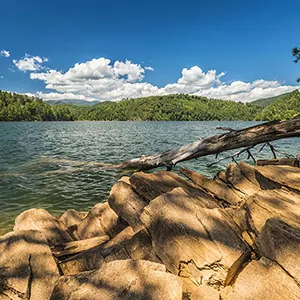 Great Smoky Mountains National Park is a large park, covering over 800 square miles. There is so much to see and do in the park, and it may seem overwhelming to plan if you only have one day in the park. The best way to see the Great Smoky Mountains in one day, or in a short amount of time is to pick a few of the main areas that you want to visit. Some favorite spots in the park include:
Great Smoky Mountains National Park is a large park, covering over 800 square miles. There is so much to see and do in the park, and it may seem overwhelming to plan if you only have one day in the park. The best way to see the Great Smoky Mountains in one day, or in a short amount of time is to pick a few of the main areas that you want to visit. Some favorite spots in the park include:
1. Cades Cove: A one-way loop road in Cades Cove takes you through a vibrant valley, offering some of the best chances to see wildlife in the park. Scattered along the loop are historic churches, a working mill, barns and log houses. A phenomenal way to explore the loop is on a bicycle; rentals at available at the Cades Cove Campground.
2. Cataloochee: On the east side of the park, Cataloochee is an excellent location for wildlife viewing, fall foliage, and contains many historic homesteads. There are many wonderful hiking trails, including: The Boogerman Trail, and the Little Cataloochee Trail. An abundant trout population makes for opportune fishing in this area.
3. Oconaluftee Valley: This is the southern entrance of the park, and Oconaluftee, itself, is home to the Mountain Farm Museum and Mingus Mill, which is a collection of historic farmhouses and log buildings gathered from around the park and brought to one location. In the surrounding area, there are numerous hiking trails, and even more trails just west of Oconaluftee at Deep Creek.
4. Clingman’s Dome/Newfound Gap: Clingman’s Dome is the highest point in Great Smoky Mountain National Park, and straddles the border of North Carolina and Tennessee. There is the famous observation tower on top that allows you to look down on seven states. There are many hiking trails that leave from Clingman’s Dome Road, including: Sugarland Mountain Trail, Andrews Bald, and Spruce-Fir Trail. Newfound Gap Road is the road that runs north to south in the park. The northern section of this road is a great jump-off to really spectacular hiking and scenic areas. Hiking from Newfound Gap includes: Mount LeConte, Charlies Bunion, The Jump Off and Chimney Tops.
5. Fontana Lake: At 480 feet tall, the Fontana Dam is the tallest dam in the eastern United States. This historic dam creates Fontana Lake, which contains over 240 miles of shoreline. The lake offers incredible boating, kayaking and fishing opportunities, as well as access to the remote Hazel Creek and Eagle Creek. There is also great hiking in the area, with trails including: Twentymile Trail, Wolf Ridge Trail, and the Shuckshack Fire Tower.
Another great way to maximize your time in the park, is to go on a guided day hike. With an expert Smokies guide, you will learn about the wildlife, flora, geology and rich cultural and human history of the region. Appropriate gear, snacks and lunch are provided, so you can focus on enjoying the landscape, while Wildland Trekking takes care of the rest.
Sunrise in the Smoky Mountains
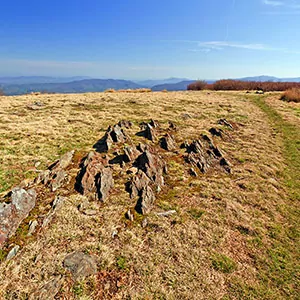 Almost nothing in the world beats an early morning watching the sun rise over the Great Smoky Mountains. With the layers of terrain, slowly lighting up, one by one, sunrise is a sight to behold. If you have a limited amount of time in the park, make sunrise a priority—you will not be disappointed. Bring your layers and a warm drink, and enjoy the beauty. Below are the best places to watch sunrise in the Smokies:
Almost nothing in the world beats an early morning watching the sun rise over the Great Smoky Mountains. With the layers of terrain, slowly lighting up, one by one, sunrise is a sight to behold. If you have a limited amount of time in the park, make sunrise a priority—you will not be disappointed. Bring your layers and a warm drink, and enjoy the beauty. Below are the best places to watch sunrise in the Smokies:
1. Little River Road: Connecting the Sugarlands Visitor Center area to Cades Cove, the 18 miles of Little River Road hosts numerous pullouts that are fantastic to watch sunrise. The pullouts are scattered along the road, so they aren’t too busy in the early morning. Views from Little River Road overlook the mountains, and provide spectacular sights of the rolling mountains slowly illuminating with the day’s first light. After watching sunrise on Little River Road, you can head to Laurel Falls—a short hike to a magnificent waterfall, that will be less crowded in the early morning; or to Cades Cove.
2. Clingman’s Dome: This is one of the best spots to catch sunrise, or sunset. Clingman’s Dome is the highest point in Great Smoky Mountain, at 6643 feet. There is an observation tower—a steep half mile walk up a paved path, that gives you 360° view of the Smokies and beyond. And, even if you decide not to walk up to the observation tower, you are still rewarded with sweeping mountain views from the parking area. Because you can see for almost 100 miles in any direction, on a rare clear day, this is the perfect location for watching the sun rise or set.
3. Oconaluftee Valley Overlook: From this vantage point, you are looking down on the valley—it’s layers of densely-forested mountains crashing down to the valley floor before shooting up the other side. Oconaluftee Valley Overlook is spectacular during any time of the day, but especially at sunrise. The mountains slowly light up, one by one, each capturing the sun’s colors differently. This view is every sunrise enthusiast’s dream.
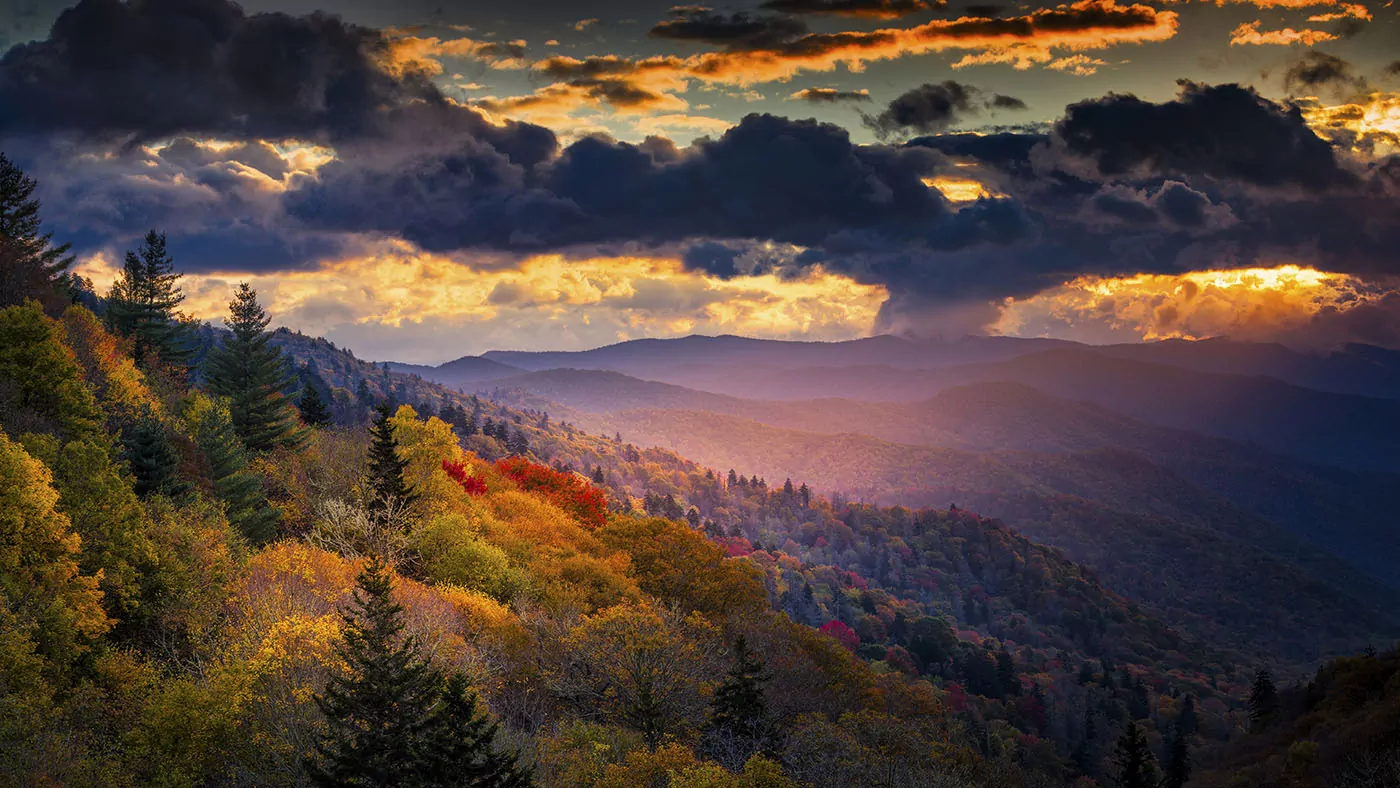
Sunset in the Smokies
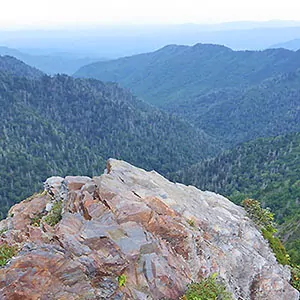 Make sure you stick around long enough to watch sunset in the Great Smoky Mountains—this is one thing you do not want to miss! Below are the best locations to catch sunset in the park:
Make sure you stick around long enough to watch sunset in the Great Smoky Mountains—this is one thing you do not want to miss! Below are the best locations to catch sunset in the park:
1. Morton Overlook: This view faces the Great Smoky Mountains to the west, making it the perfect sunset location. The valley is flanked by ridgelines and peaks, and as the sun lowers in the wide-open sky, it casts shadows and light on different areas, making for a magical sunset. Note: this is a very popular spot for sunset, but there are other pullouts nearby that could leave you with less congestion.
2. Foothills Parkway: There are certain spots along the Foothills Parkway that face west to the Tennessee Valley, offering great views of the sun as it sets beyond the mountains of the Cumberland Plateau. You have great views at many pullouts on the road, or you can head straight to Look Rock—a natural observation tower overlooking the Smokies. It is a half-mile paved path that will take you to the top of the tower, and once on top, you will receive a 360° vista of the park. This is a great alternative to watching sunrise or sunset at Clingman’s Dome, as it is much less crowded.
Take a Hike in the Great Smoky Mountains
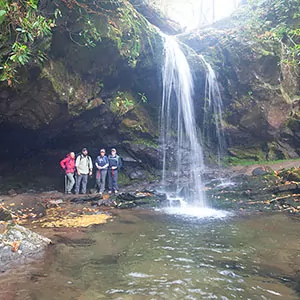 Believe it or not, Great Smoky Mountains is the #1 most visited National Park in the United States, seeing over 11 million visitors each year. This number of visitors is a little intimidating, but once you hike just 100 yards down a trail, the crowds are exponentially less. With over 850 miles of hiking trails in the park, there are many options for where to take a hike. Trails range in difficulty from easy to strenuous, and also range in distance; but all bring you to remarkable destinations and awe-inspiring overlooks. You can read the Park Service’s
Believe it or not, Great Smoky Mountains is the #1 most visited National Park in the United States, seeing over 11 million visitors each year. This number of visitors is a little intimidating, but once you hike just 100 yards down a trail, the crowds are exponentially less. With over 850 miles of hiking trails in the park, there are many options for where to take a hike. Trails range in difficulty from easy to strenuous, and also range in distance; but all bring you to remarkable destinations and awe-inspiring overlooks. You can read the Park Service’s
1. Charlies Bunion: This 8-mile roundtrip hike starts at Newfound Gap, which straddles North Carolina and Tennessee, and travels east on the Appalachian Trail. You are rewarded with panoramic views of the North Carolina Smokies throughout the hike, as well as views of Mount LeConte and Myrtle Point. At four miles, you will reach a fork in the trail, make sure you stay left here to go to Charlies Bunion. Here, you are rewarded with a remarkable and expansive vista on the rocks of Charlies Bunion (named for Charlie Conner, who went hiking with one of the early park pioneers; he rested on the rocks and took off his shoe to expose a bunion that looked similar to the rock outcropping). When you are ready, simply turn around and head down the way you came up.
7. The Jump Off: Hikers will use the parking area at Newfound Gap, and begin east on the Appalachian Trail to this infamous rock outcropping. Along the way, you will be able to take in the beauty of Mount LeConte and Myrtle Point in the distance. At 3.2 miles, you will reach the Jump Off, and have remarkable views of Charlies Bunion, Mount Guyot and the Appalachian Trail ridge. On the way back to the trailhead, take a quick detour to Charlies Bunion—heading east at the marked junction.
2. Ramsey Cascades: Starting at the Ramsey Cascades Trailhead, this 8-mile, out-and-back trail takes you up 2,200 feet to the tallest waterfall in the park, at roughly 100 feet. Along the way, you will hike through the park’s largest intact old growth forest, which gives you firsthand experience of the Smokies unique biodiversity. According to the Eastern Native Trees Society, some of the largest trees in the park are along this trail. Also along the way you will pass many streams, waterfalls, rivers and pools—there is a little bit of everything on this trail. Once you reach Ramsey Cascades, you can sit on the rocks around the pool and enjoy the view. With the amount of elevation gain in the short amount of time, this trail is considered moderate to strenuous.
3. Chimney Tops: This short, but steep trail takes you from Newfound Gap to Chimney Tops, and is one of the most popular hiking destinations in the park. It is popular for a reason, as the views from the top are out-of-this-world, giving you a great vantage point on Mount LeConte and the Chimney Tops pinnacles. The newly renovated trail contains rock steps and raised structures, and hosts an observation point at the top. From the trailhead to the top, and back is 3.3 miles. It should be noted, however, that just because this trail is short and contains steps, it gains a lot of elevation in a very short amount of time—similar to the elevation gain of hiking a Colorado 14er.
4. Baskins Creek Falls: Starting at the Baskins Creek Trail Trailhead near Gatlinburg, the trail leads to one of the most underrated waterfalls in the park. There is a creek crossing one mile into the trail that does not have a bridge; trying to cross after a large rainstorm could become difficult. After the creek crossing, the trail is level and easy to follow to Baskins Creek Falls. This 3-mile roundtrip hike will take you to a 40-foot, two-tiered waterfall, which provides a great place for a snack and a foot soak.
5. Rainbow Falls: This 5.5-mile hike takes you on a steep uphill for the first mile, giving you a glimpse of LeConte Creek cascading beside the trail. Soon, the trail levels out as you travel through the LeConte Creek Valley. Rainbow Falls is named for the rainbow that is common as the afternoon sun shines through the mist of the waterfall. It is also said to be the tallest single-drop waterfall in the park. If you wish to extend your trek by 4.2 miles, you can continue on the trail to Mt. LeConte—the third tallest peak in Great Smoky Mountains National Park.
6. Mount LeConte via Alum Cave Trail: There are five trails to get to the top of Mount LeConte. Alum Cave Trail is the shortest, at 11 miles roundtrip. You will start at the trailhead along Newfound Gap Road, and follow Alum Creek for the fist mile before reaching Arch Rock. Alum Cave, which is actually a concave bluff, is a bit further and boasts rich history. Some parts of the trail are along a cliff face, with a sheer vertical drop on the side—handrails provide a sense of security on this thrilling section. Once you reach the top, you will see LeConte Lodge, but the best view comes from Cliff Top, a half of a mile past the lodge. Cliff Top gives you a spectacular and panoramic vantage point to the surrounding area; this is the best viewpoint, but if you want, you can continue to the summit, where you will be standing at 6,643 feet on the third tallest peak in Great Smoky Mountains National Park. Once you have soaked in the view enough, head back down the trail to the trailhead.
Great Smoky Mountain National Park has a “Hike the Smokies” program for logging your hiking mileage. After 100 miles, 250 miles and 500 miles, you are awarded a pin and can add your name to the “Hike the Smokies” record book. There is a program for individuals, as well as families.
Other Things to Do in the Great Smoky Mountains
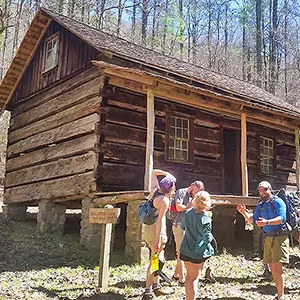 There are so many other great ways to explore Great Smoky Mountains National Park. Below is a list of popular activities in the park:
There are so many other great ways to explore Great Smoky Mountains National Park. Below is a list of popular activities in the park:
– Fishing: There are approximately 730 miles of fishable streams inside the boundaries of the Great Smoky Mountains. You may fish everyday, from half an hour after sunrise to half an hour before sunset. All fishers are required to carry a North Carolina or Tennessee fishing license.
– Bicycling: A great activity for your day in the Great Smoky Mountains is bike riding on the 11-mile, one-way road through Cades Cove. Bicycles are available for rental at the Cades Cove Campground.
– Kayaking: Kayaking is available on many lakes in the surrounding area. The historic Fontana Lake is perfect for a day paddle. Or, join a guided Hike & Paddle Trip, where you will experience the best of the Smokies, on land and on water—this is a fantastic way to enjoy the two best activities in the park.
– Horseback Riding: Guided horse rides are offered in multiple areas within the park, and rides last anywhere from 45 minutes to several hours. Hayrides and wagon rides are also offered.
JOIN A GUIDED HIKING ADVENTURE
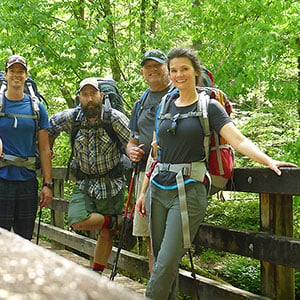 Great Smoky Mountains National Park is a rich, pristine wilderness with abundant wildlife, amazing views and unforgettable opportunities for hiking vacations. Wildland Trekking offers a variety of ways to enjoy the Smoky Mountains, including backpacking trips, portered treks, inn-based tours and day hikes.
Great Smoky Mountains National Park is a rich, pristine wilderness with abundant wildlife, amazing views and unforgettable opportunities for hiking vacations. Wildland Trekking offers a variety of ways to enjoy the Smoky Mountains, including backpacking trips, portered treks, inn-based tours and day hikes.
Guided Smoky Mountain treks are all-inclusive meaning the following is included: local round trip transportation from Asheville; wonderful meals; top-of-the-line equipment; risk management systems; professional hiking/wilderness guides and more.
SMOKIES ADVENTURE TOURS
- GUIDED BACKPACKING TRIPS: these adventures are opportunities to explore the deep wilderness and extraordinary beauty of the Smokies.
- PORTERED HIKES: hike and camp far in the backcountry of the Appalachian Mountains with the convenience of light day packs and expert guides.
- INN-BASED HIKING TOURS: discover the magic of the Smoky Mountains on amazing daily hikes and enjoy wonderful Appalachian accommodations at night.
- DAY HIKE TOURS: make the most of your time in Great Smoky Mountains National Park with our expert guides and all-inclusive tours!
- ASHEVILLE AREA HIKING ADVENTURES: explore the stunning Blue Ridge Mountains around Asheville on backpacking, portered, and inn-based tours!





